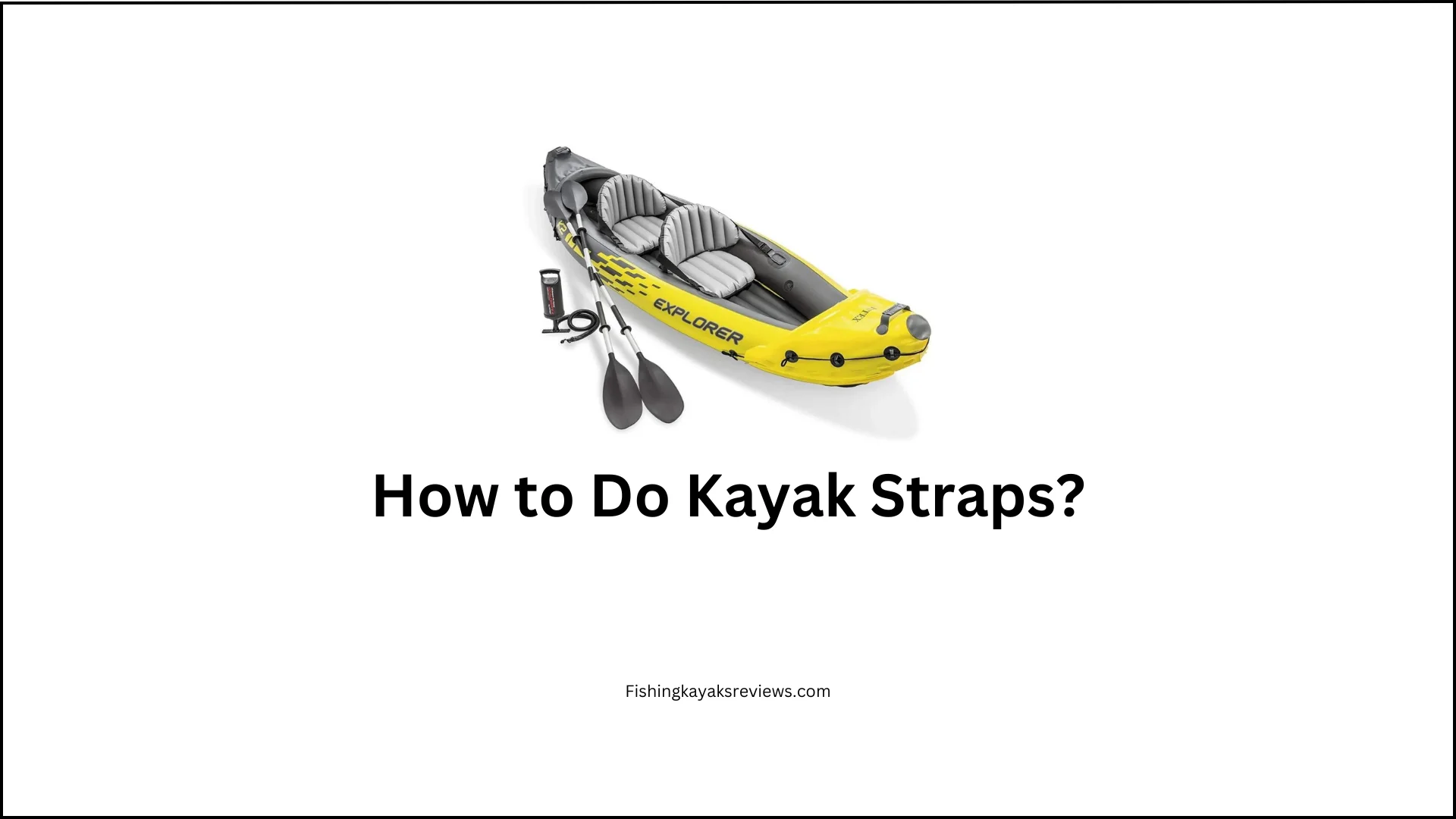How to Do Kayak Straps? A Simple Guide

Kayaking is a great way to enjoy the outdoors, but before you hit the water, you need to make sure your kayak is safely secured to your vehicle. Kayak straps help keep your kayak in place while you drive. Here’s a simple guide on how to use kayak straps properly.
What Are Kayak Straps?
Kayak straps are strong bands made from materials like nylon or polyester. They are used to fasten your kayak to your roof rack or trailer. Most straps come with buckles or hooks to make them easy to use. Using these straps correctly will keep your kayak from moving around during transport.
Preparing Your Kayak and Vehicle
Before you start strapping down your kayak, make sure both your kayak and your vehicle are ready:
- Check the Roof Rack: Make sure your roof rack is firmly attached to your vehicle. The crossbars should be clean and free from dirt.
- Inspect Your Kayak: Look over your kayak to ensure it’s in good condition. It should be clean and dry to avoid damage.
Positioning the Kayak on the Roof Rack
Follow these steps to position your kayak correctly:
- Center the Kayak: Lift your kayak onto the roof rack and place it so that it is centered on the crossbars. It helps balance the weight evenly.
- Align the Hull: Make sure the bottom of the kayak (the hull) is resting securely on the crossbars. The kayak shouldn’t hang off the sides of the rack.
Securing the Kayak with Straps
Here’s how to secure your kayak using the straps:
- Prepare the Straps: Get your kayak straps and check that they are long enough to go over the kayak and around the crossbars. Adjust them if needed.
- Place the Strap Across the Kayak: Lay the strap over the kayak and position it over the crossbar. Try to place the strap close to the ends of the kayak.
Fasten the Strap
- With Buckles: Thread the strap through the buckle and pull it tight. Ensure the buckle is secure and the strap is snug against the kayak.
- With Hooks: If your straps have hooks, attach them to the crossbars or designated points. Pull the strap tight to secure the kayak.
- Adjust the Tension: The strap should be tight but not too tight. Check for any slack and adjust as needed.
- Secure the Loose Ends: After tightening the straps, secure any loose ends to prevent them from flapping around.
Double-Check the Security
Before driving, make sure everything is secure:
- Shake Test: Gently shake the kayak to check if it moves. If it does, adjust the straps until the kayak is stable.
- Inspect the Straps: Ensure all straps are tightly fastened, and there’s no slack. Check that the buckles or hooks are securely in place.
- Check the Kayak’s Position: Make sure the kayak stays centered on the roof rack.
Extra Tips for Transporting Your Kayak
Here are a few extra tips to keep your kayak safe:
- Use Padding: Place foam pads or a kayak carrier on the crossbars to protect both the kayak and your vehicle.
- Avoid Overloading: Don’t add extra weight to the roof rack beyond its capacity.
- Drive Carefully: Avoid sudden stops or sharp turns to keep the kayak from shifting.
Unloading the Kayak
When you reach your destination:
- Remove the Straps: Undo the straps and take them off the crossbars.
- Lift the Kayak: Gently lift the kayak off the roof rack and place it on a safe surface.
Storing Your Kayak Straps
To keep your kayak straps in good shape:
- Clean the Straps: Rinse off any dirt or debris after use.
- Store Properly: Keep the straps in a cool, dry place away from direct sunlight.
Conclusion
Using kayak straps correctly is important for a smooth kayaking experience. By following these simple steps, you can ensure your kayak is securely fastened during transport. For those looking for a good kayak without breaking the bank, check out our article on the Best Fishing Kayak Under $500. This guide will help you find the perfect kayak for your adventures.






